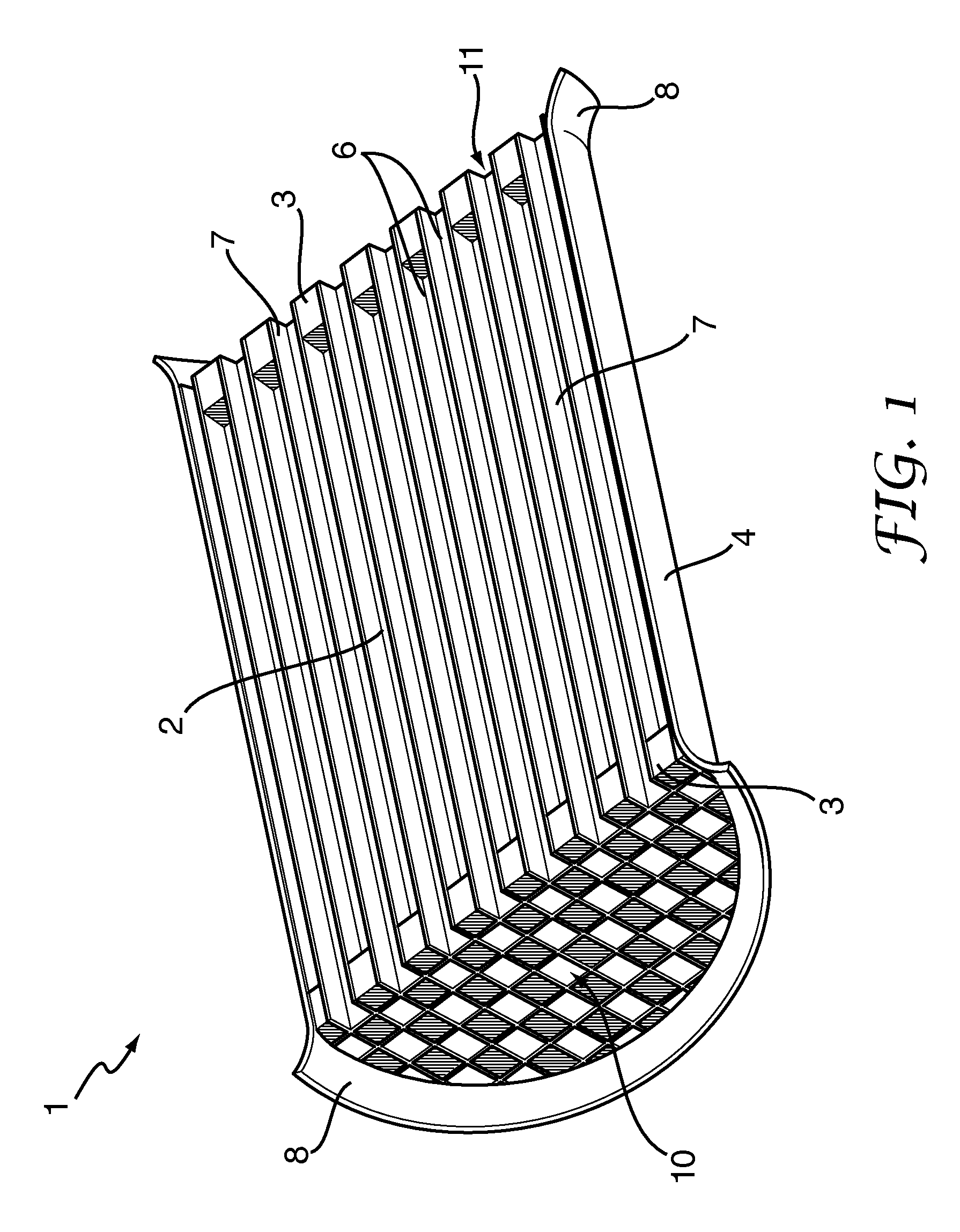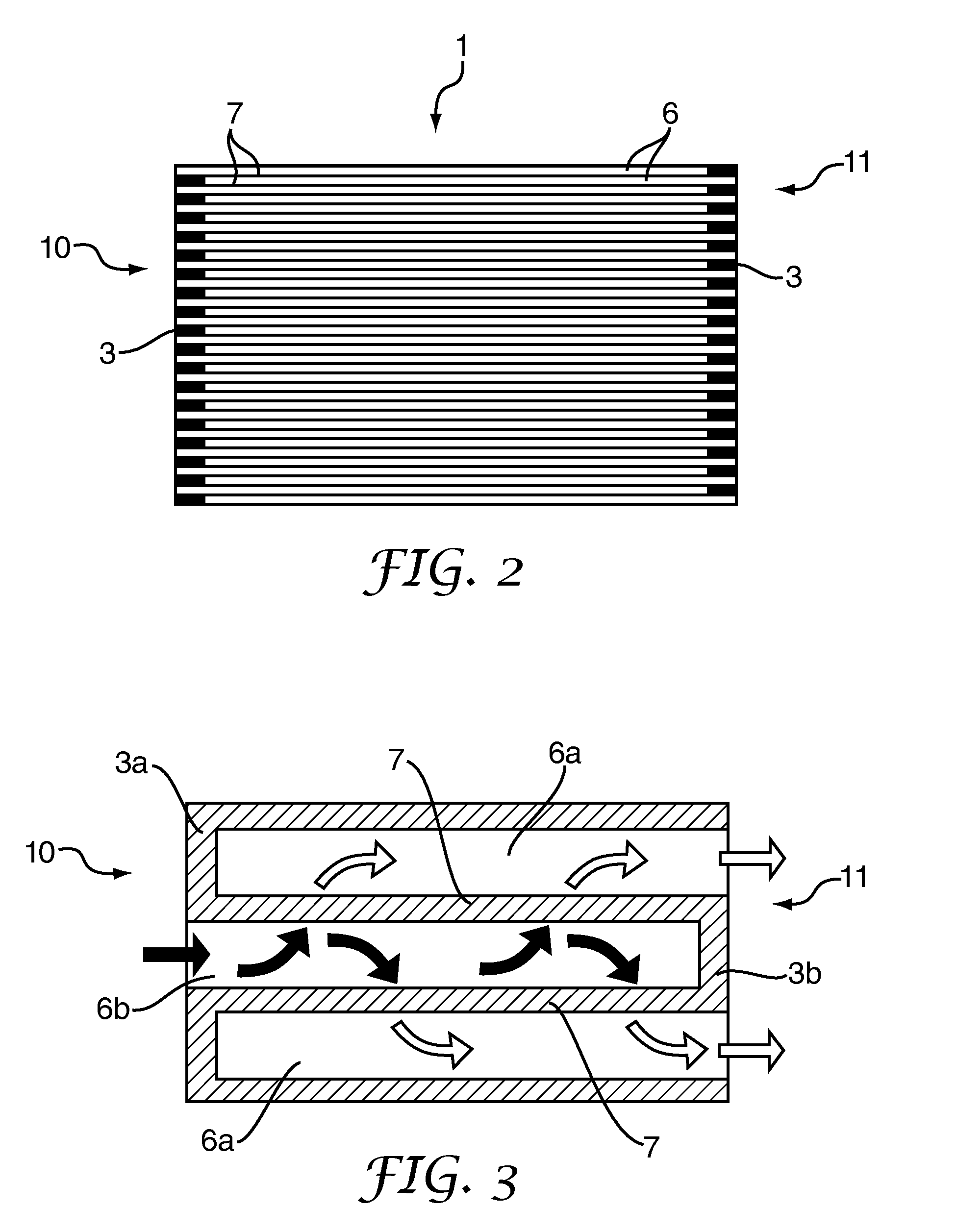Method and apparatus for filter condition inspection
a filter and condition inspection technology, applied in the direction of radiation pyrometry, exhaust treatment, instruments, etc., can solve the problems of affecting the integrity of the filter, affecting the operation of the filter, so as to reduce the contrast, reduce the length of the blockage, and reduce the effect of blocking
- Summary
- Abstract
- Description
- Claims
- Application Information
AI Technical Summary
Benefits of technology
Problems solved by technology
Method used
Image
Examples
Embodiment Construction
[0050]FIGS. 1 and 2 show a schematic diagram of a wall-flow filter 1 comprising a cylindrical ceramic monolith core 2 contained within a cylindrical metal surround or sleeve 4. The overall diameter of a filter 1 for a vehicle exhaust system is generally between 100 and 400 mm. The ceramic filter cores 2 have a number of elongate channels 6 running along their length. These channels 6 generally have an approximately square cross-section and are about 0.6-2 mm in width. In FIG. 1 the relative size of the channels 6 compared to the dimensions of the filter 1 has been increased for clarity. Between the channels 6 the walls 7 of the filter core 2 are formed from a porous ceramic. The ceramic may be, for example, cordierite (magnesium iron aluminium cyclosilicate), silicon carbide, or aluminium titanate. Typical porosities are between 40 and 50% with a mean pore size between 10 and 20 μm, or smaller for Euro 6 filters. Neighbouring channels 6 in the filter 1 are plugged at alternate ends ...
PUM
| Property | Measurement | Unit |
|---|---|---|
| peak wavelength | aaaaa | aaaaa |
| peak wavelength | aaaaa | aaaaa |
| temperature | aaaaa | aaaaa |
Abstract
Description
Claims
Application Information
 Login to View More
Login to View More - R&D
- Intellectual Property
- Life Sciences
- Materials
- Tech Scout
- Unparalleled Data Quality
- Higher Quality Content
- 60% Fewer Hallucinations
Browse by: Latest US Patents, China's latest patents, Technical Efficacy Thesaurus, Application Domain, Technology Topic, Popular Technical Reports.
© 2025 PatSnap. All rights reserved.Legal|Privacy policy|Modern Slavery Act Transparency Statement|Sitemap|About US| Contact US: help@patsnap.com



